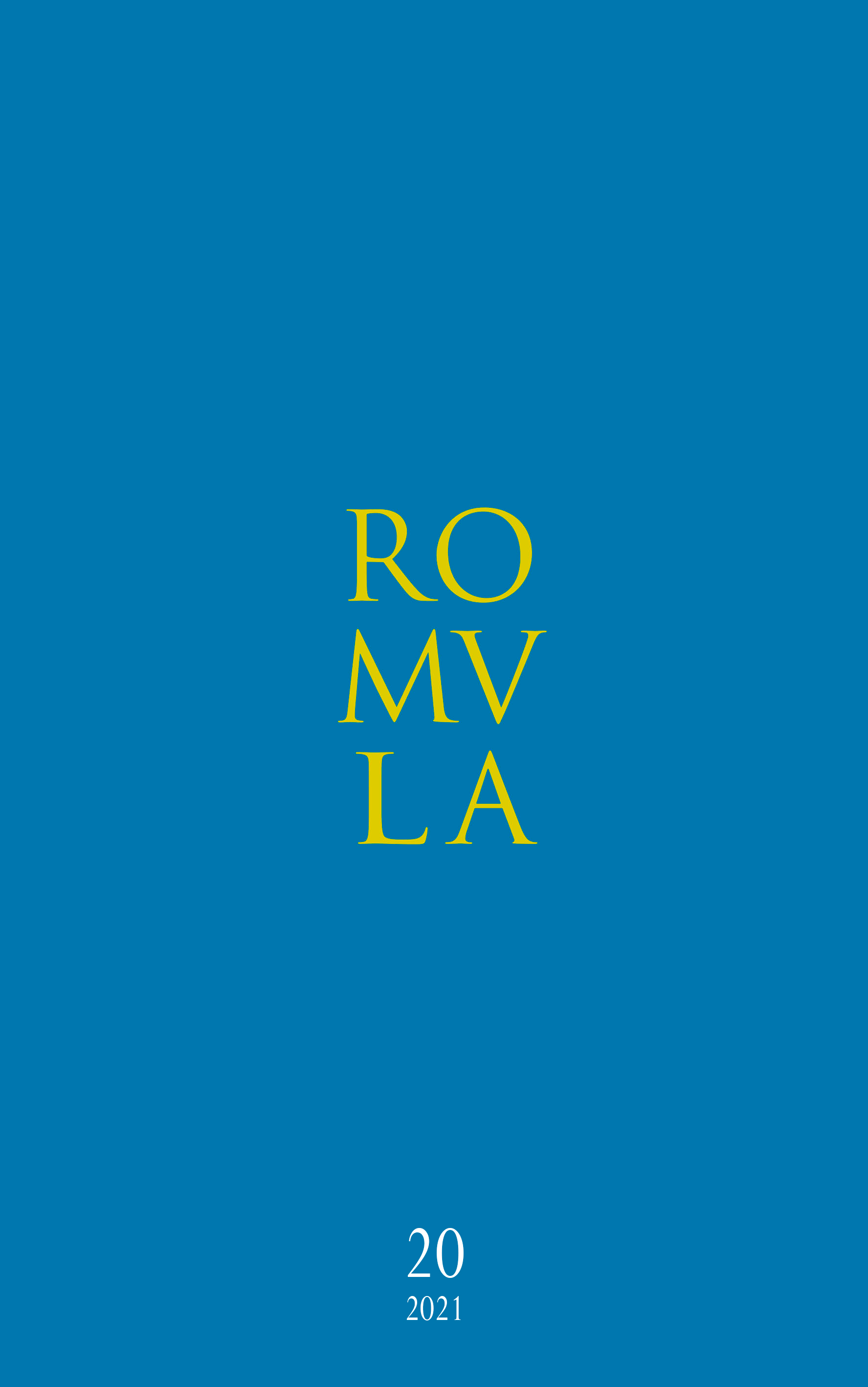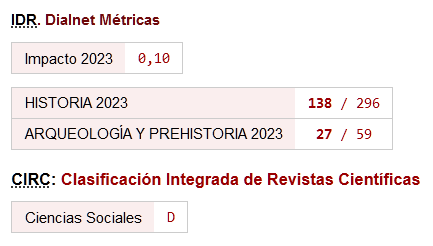The Bioclimatic design of Hadrian’s Villa
Keywords:
Hadrian’s Villa, bioclimatic design, sustainable architectureAbstract
It is known how ancient architecture was designed in close relationship with the environmental context (climate, winds). In addition, the natural elements (vegetation, water) were wisely integrated into the design to trigger beneficial effects for the built environment and, consequently, for the users’ well-being. This is how a bioclimatic design is defined. Hadrian’s Villa is absent from the technological-specialist literature that deals with the topic, although it represents an exceptional example of integration between techniques and arts. The article analyses the architecture-environment relationship of the Tiburtine Imperial Villa by examining the main design solutions that see an exceptional integration between technical solutions, formal ones, and the creation of scenographic effects.
Downloads
References
ABRAMS, D.W. (1985): "Low-Energy Cooling" A Guide to the practical Application of Passive Cooling and Cooling Energy Conservation Measures, V AN NOSTRAND REINHOLD COMPANY, New York.
ADEMBRI, B. E CINQUE, G.E. (2010): "Tecnica e tecnologia nell'Edificio con Peschiera di Villa Adriana", in Lazio e Sabina, 6, Atti del Convegno, Sesto Incontro di Studi sul Lazio e la Sabina, Roma, 4-6 marzo 2009.
AHMED, R.M. (2014): "Lessons learnt from the vernacular architecture of bedouins in Siwa oasis, Egypt". In ISARC. Proceedings of the International Symposium on Automation and Robotics in Construction, 31, 1.
https://doi.org/10.22260/ISARC2014/0123
ALBERTI, L.B. (1782) [1550]: Della architettura della pittura e della statua, traduzione dal latino di Cosimo Bartoli, Bologna.
BEDAL, L.A. (2001): "A Pool Complex in Petra's City Center", in Bulletin of the American Schools of Oriental Research, 23-41.
https://doi.org/10.2307/1357630
BEDAL, L.A. (2004): The Petra Pool-Complex: A Hellenistic Paradeisos in the Nabatean Capital, Piscataway NJ.
BENSALEM, R. (1991): Wind-Driven Natural Ventilation in Courtyard and Atrium-Type Buildings, PhD thesis, University of Sheffield.
BIANCHI, G.G. E MC CAVE, I.N. (1999): "Holocene periodicity in North Atlantic climate and deep-ocean flow south of Iceland", in Nature, 397, 515-517.
BLOCH, H. (1937): "I bolli laterizi e la storia edilizia romana; la Villa di Adriano a Tivoli", in Bullettino Commissione Archeologica Comunale di Roma, 65, 113-181.
BUX, E. (1956): Xenophon: Die sokratischenSchriften. Memorabilien, Symposion, Oikonomikos, Apologie. Übertragen und herausgegeben von Ernst Bux, Kröner, Stuttgart.
CAMUFFO, D. (1990): Clima e uomo, Garzanti Editore, Milano.
CAMUFFO, D. (1993): "Reconstructing the climate and the air pollution of Rome during the life of the Trajan Column", in The Science of the Total Environment, 128, 205-226.
https://doi.org/10.1016/0048-9697(93)90220-Z
CINQUE, G.E. (2013): "Le componenti progettuali nell'architettura della villa Adriana: il nucleo centrale", in Hidalgo, R. e Leon, P. (a cura di), Roma, Tibur, Baetica. Investigaciones Adrianeas, Sevilla.
CINQUE, G.E. (2017): Le rappresentazioni planimetriche di Villa Adriana tra XVI e XVIII secolo: Ligorio, Contini, Kircher, Gondoin, Piranesi, Roma.
https://doi.org/10.4000/books.efr.33075
CINQUE, G.E. (2018): "Canopo e Serapeo", in Cinque, G.E. e Marconi, N., (a cura di), Villa Adriana. Passeggiate iconografiche, Foligno, 203-204.
CINQUE, G.E. (2020): "Villa Adriana: uno sguardo a volo d'uccello", in Hidalgo, R., Cinque, G.E. e Viscogliosi, A., (a cura di), Adventus Hadriani, Investigaciones sobre arquitectura adrianea, 403-439.
CINQUE, G.E. E MARCONI, N. (a cura di) (2018): Villa Adriana. Passeggiate iconografiche, Foligno.
CORREIRA, M., DI PASQUALE, L. E MECCA, S. (a cura di) (2014): Versus: heritage for tomorrow: vernacular knowledge for sustainable architecture, Firenze.
https://doi.org/10.36253/978-88-6655-742-5
DALLEY, S. (1993): "Ancient Mesopotamian Gardens and the Identification of the Hanging Gardens of Babylon Resolved", in Garden History, 21 (1), 1-13.
https://doi.org/10.2307/1587050
DALLEY, S. (1994): "Nineveh, Babylon and the Hanging Gardens: Cuneiform and Classical Sources Reconciled", in Iraq, 56, 45-58.
https://doi.org/10.1017/S0021088900002801
DERMODY, B. (2011): "Revisiting the humid Roman Hypothesis: novel analyses depict oscillating patterns", in Climate of the Past Discussions, 7(4), 2355-2389.
https://doi.org/10.5194/cpd-7-2355-2011
DERMODY, B.J., ET AL. (2012): "A seesaw in Mediterranean precipitation during the Roman Period linked to millennial-scale changes in the North Atlantic", in Climate of the Past, 8(2), 637-651.
https://doi.org/10.5194/cp-8-637-2012
DI TURI, S., ET AL. (2017): "Recovery of ancient bioclimatic strategies for energy retrofit in historical buildings: the case of the Infants' Tower in the Alhambra", in Energy Procedia, 133, 300-311.
https://doi.org/10.1016/j.egypro.2017.09.391
DUAN, Z., ET AL. (2012): "Indirect evaporative cooling: Past, present and future potentials", in Renewable and Sustainable Energy Reviews, volume 16, 9, 6823-6850.
https://doi.org/10.1016/j.rser.2012.07.007
DUNHAM, D. (1960): "The Courtyard House as a Temperature Regulator", in The new Scientist, 663.
DUNKLE, V. (1966): "Regenerative Evaporative Cooling Systems, CSIRO, AlRAH TRANSACTION", in Australia Refrigeration, Air Conditioning and Heating.
EVYASAF, R.S. (2010): "Gardens at a Crossroads: The Influence of Persian and Egyptian Gardens on the Hellenistic Royal Gardens of Judea", in Bollettino di Archeologiaon line, D / D9 / 5.
FATHY, H. (1973): The Arab house, Exeter University, England.
FOSTER, K. (2004): "The Hanging Gardens of Nineveh", in Iraq, 66, 207-220.
https://doi.org/10.1017/S0021088900001790
GATTO, E., ET AL. (2020): "Impact of Urban Vegetation on Outdoor Thermal Comfort: Comparison between a Mediterranean City (Lecce, Italy) and a Northern European City (Lahti, Finland)", in Forests, 11, 228.
https://doi.org/10.3390/f11020228
GROSSO, M. (2002): "La ventilazione naturale per il raffrescamento passivo", in L'Architettura naturale, 15.
HARPER, K. (2019): Il destino di Roma. Clima, epidemie e la fine di un impero, Torino, Giulio Einaudi.
HARVEY, W. (1991): "Archaeology in Syria", in American Journal of Archaeology, 95, 4, 683-740.
https://doi.org/10.2307/505899
HOFFMANN, A. (1980): DasGarten-Stadion in der Villa Hadriana, Mainz.
IGHANY, G. (2008): "Le torri del vento in Iran", in Agathon, Recupero e fruizione dei contesti antichi, 2.
JASHEMSKI, ET AL. (2017): Gardens of the Roman Empire, Cambridge.
https://doi.org/10.1017/9781139033022
JOHNSON, W. (1995): "Traditional Architecture in the Middle East Has Ways of Keeping Cool", in Kingdom of Saudi Arabia: ARAMCO World, 10-17.
JONES, H.G. E ROTENBERG, E. (2011): "Energy, Radiation and Temperature Regulation in Plants", in eLS.
https://doi.org/10.1002/9780470015902.a0003199.pub2
KANELLOPOULOS, C. E AKASHEH, T.S. (2001): "The Petra Map", in Bulletin of the American Schools of Oriental Research 324, Nabataean Petra, 5-7.
https://doi.org/10.2307/1357628
LAPP, N.L. 1980: "The Excavations at Araqel-Emir", in The Annual of the American Schools of Oriental Research, 47, I, 1-158.
https://doi.org/10.2307/3768570
LEKAN, M.A., ET AL. (2017): "Innovative green approach informatics to managing thermal sources and its effect in residential buildings in tropical climate", in International Journal of Civil Engineering and Technology, 8 (12), 175-184.
MALAPERDAS, G., (2019): "The Influence and Impact of Bioclimatic Indicators on the Evolution of Biosociety. A Geoarchaeological approach", in World News of Natural Sciences, 24, 183-198.
MARCONI, N. (2018): "Biblioteche", in Cinque, G.E. e Marconi, N. (a cura di), Villa Adriana. Passeggiate iconografiche, Foligno, 229-230.
MOHSEN, M.A. (1979): "Solar radiation and courtyard house forms-Il: application of the model", in Building and Environment 14, 185-201.
https://doi.org/10.1016/0360-1323(79)90037-4
NAGA, M.M.A. (1990): Natural ventilation and cooling by evaporation in hot-arid climates, University of Leeds, Department of Civil Engineering, Ph.D. Thesis, February.
NETZER, E. (1981): Greater Herodium. Qedem 13, Jerusalem, Institute of Archaeology, Hebrew University of Jerusalem.
NETZER, E. (1995): "The Hasmonean Swimming Pools at Jericho", in Eretz Israel, 18, 344-52.
NETZER, E. (1999): The Palaces of the Hasmonean and Herod the Great (Hebrew), Jerusalem.
NETZER, E. (2000): "Tyros, the 'Floating Palace'". In Wilson, S. G. e Desjardins, M. (a cura di), Text and Artefact in the Religions of Mediterranean Antiquity. Essays in Honour of Peter Richardson, Waterloo, Ontario, 340-53.
NETZER, E. (2001): Hasmonean and Herodian Palaces at Jericho, Final Reports of the 1973-1987 Excavations, Vol. I: Stratigraphy and Architecture, Jerusalem.
NIELSEN, I. (1994): Hellenistic Palaces: Tradition and Renewal, Aarhus.
NIELSEN, I. (1996): "Oriental Models for Hellenistic Palaces?", in Hoepfner, W. E e Brands, G. (a cura di), Basilei: Die Paläste der HellenistischenKönige, Mainz, 201-212.
NZEB, n.d.: Form & Orientation. Disponibile a: <https://nzeb.in/knowledge-centre/passive-design/form-orientation/>.
OLGYAY, V. (1963): Design with climate-Bioclimatic approach to architectural Regionalism, Princeton University Press, Princeton, New Jersey.
PINTO, J.A. E MAC DONALD, W. (2002): Villa Adriana - La costruzione e il mito da Adriano a Louis I. Kahn, trad.it, Milano.
POTCHTER, O. 1990/91: "Climatic Aspects in the Building of Ancient Urban Settlements in Israel", in Energy and Buildings, 15-104.
https://doi.org/10.1016/0378-7788(90)90120-8
ROAF, S. (1990): "The Traditional Technological Trap: Stereotype of Middle Eastern Traditional Building Types and Technologies", in TRIALOG, 25, 26-33.
SALZA PRINA RICOTTI, E. (2001): Villa Adriana. Il sogno di un imperatore, Roma.
SHETABIVASH, H. (2015): "Investigation of opening position and shape on the natural cross ventilation", in Energy and Buildings, volume 93, 1-15.
https://doi.org/10.1016/j.enbuild.2014.12.053
SKAT, (1993): Climate responsive Building.
SODHA, M.S., ET AL. (1986): "Thermal Performance of an Evaporatively Cooled Multi-Storey Building", in Building and Environmental, Vol. 21, 2, 71-79.
https://doi.org/10.1016/0360-1323(86)90013-2
SPENA, A. (2004): Domus bioclimatica, Il Palazzo d'Inverno, Incontro Internazionale di Studio 22/23/24 - novembre 2004 e organizzato dal Ministero per i Beni e le Attività Culturali-Direzione Generale per i Beni Archeologici, dalla Soprintendenza per i Beni Archeologici del Lazio e dall'Università degli Studi di Roma Tor Vergata- Facoltà di Ingegneria.
STRONACH, D. (1994): "Parterres and Stone Water Courses at Pasargadae: Notes on the Achaemenid Contribution to Garden Design", in Journal of Garden History, 14 (1), 3-12.
https://doi.org/10.1080/01445170.1994.10412493
SULEIMAN, S. E HIMMO, B. (2012): "Direct comfort ventilation. Wisdom of the past and technology of the future (wind-catcher)", in Sustainable Cities and Society, 5, 8-15.
https://doi.org/10.1016/j.scs.2012.09.002
TUCCI, F. (2021): Raffrescamento passivo in architettura. Passive cooling in architecture, Firenze, Altralinea Edizioni.
WILKINSON, A. (1998): The Garden in Ancient Egypt, London.
WKB, J.R.W. (1997): Evaporative Air Conditioning Handbook, terza edizione, Fairmont Press.
ZANKER, P. (2008): Arte romana, Bari, Economica Laterza.
Downloads
Published
How to Cite
Issue
Section
License
Copyright (c) 2023 ROMULA

This work is licensed under a Creative Commons Attribution-NonCommercial-ShareAlike 4.0 International License.
1. Los autores conservan los derechos de autor y garantizan a la revista el derecho a ser la primera en publicar el trabajo y a hacerlo bajo una licencia “Creative Commons Reconocimiento-No Comercial 3.0 España” (CC-by-nc-sa) , salvo indicación en contrario.
2. Esta licencia permite a otros compartir, copiar, distribuir y comunicar publicamente el trabajo, así como hacer obras derivadas siempre y cuando se atribuya la obra al autor o autores, no se utilice con fines comerciales y se comparta bajo la misma licencia.
Puede consultar desde aquí la versión informativa y el texto legal de la licencia. Esta circunstancia ha de hacerse constar expresamente de esta forma cuando sea necesario.
3. Los autores pueden establecer por separado acuerdos adicionales para la distribución no exclusiva de la versión de la obra publicada en la revista (por ejemplo, situarlo en un repositorio institucional o publicarlo en un libro), con un reconocimiento de su publicación inicial en esta revista.
4. Se permite y se anima a los autores a difundir sus trabajos electrónicamente (por ejemplo, en repositorios institucionales o en su propio sitio web) antes y durante el proceso de envío, ya que puede dar lugar a intercambios productivos, así como a una citación más temprana y mayor de los trabajos publicados (Véase The Effect of Open Access) (en inglés).






